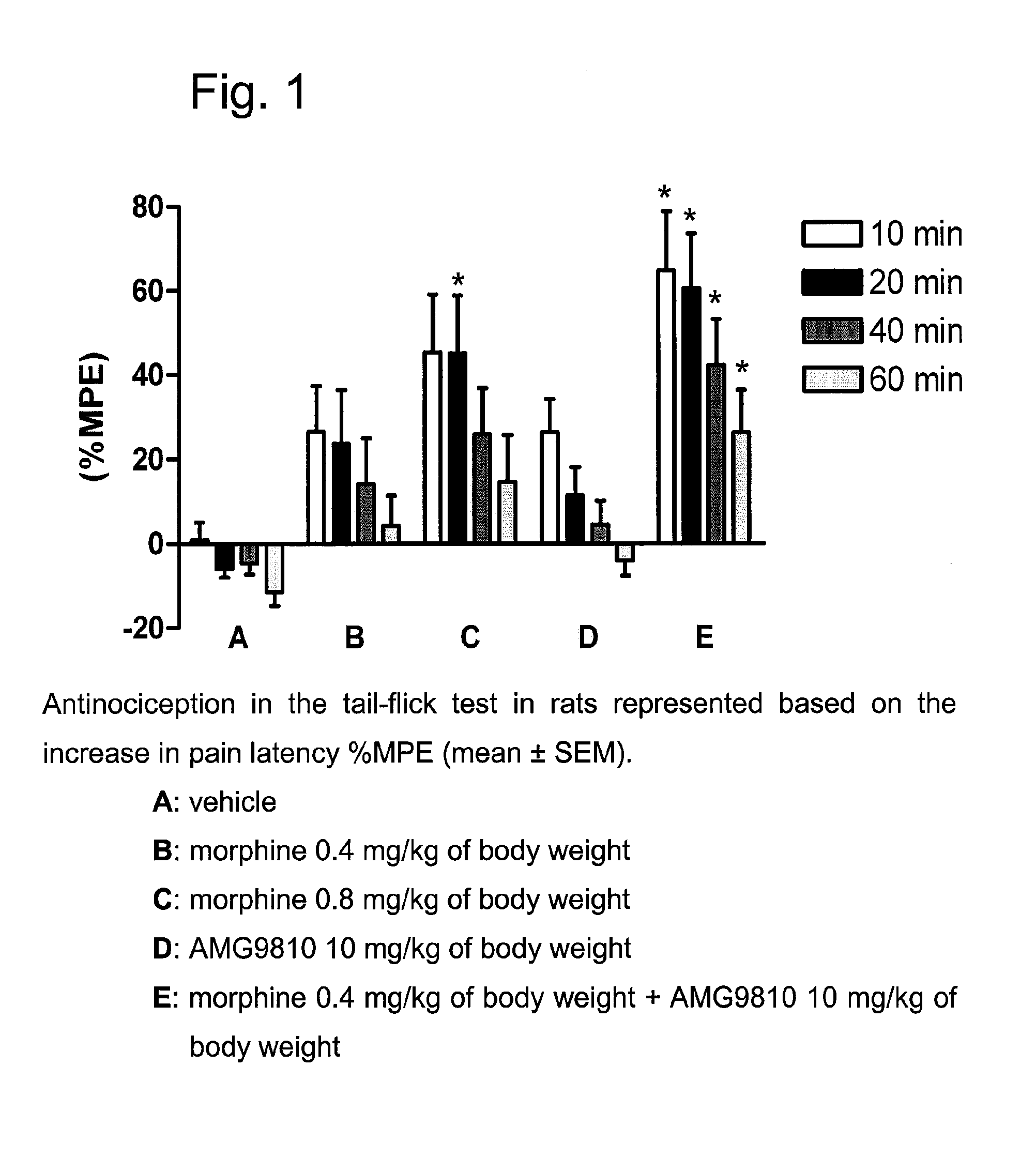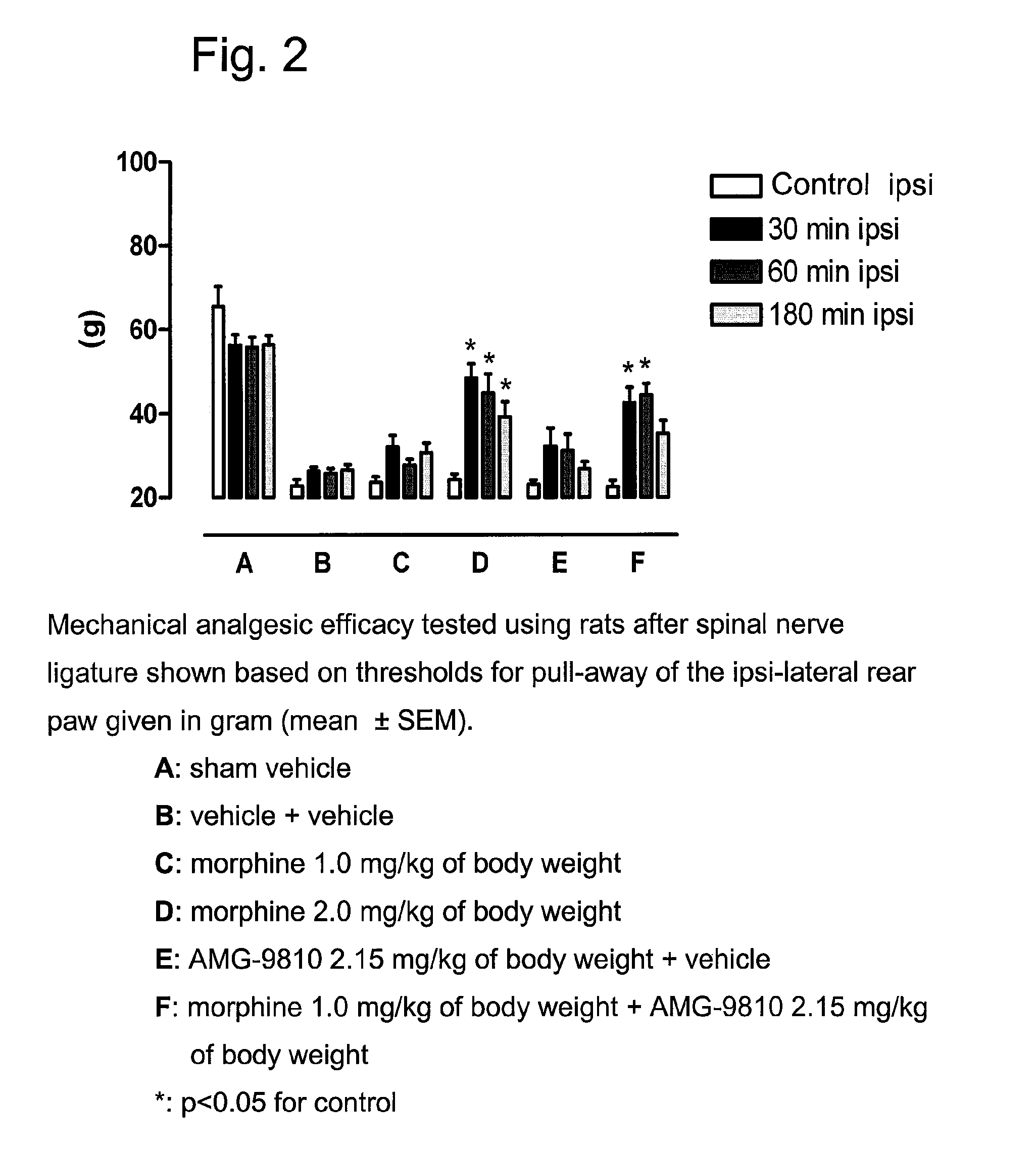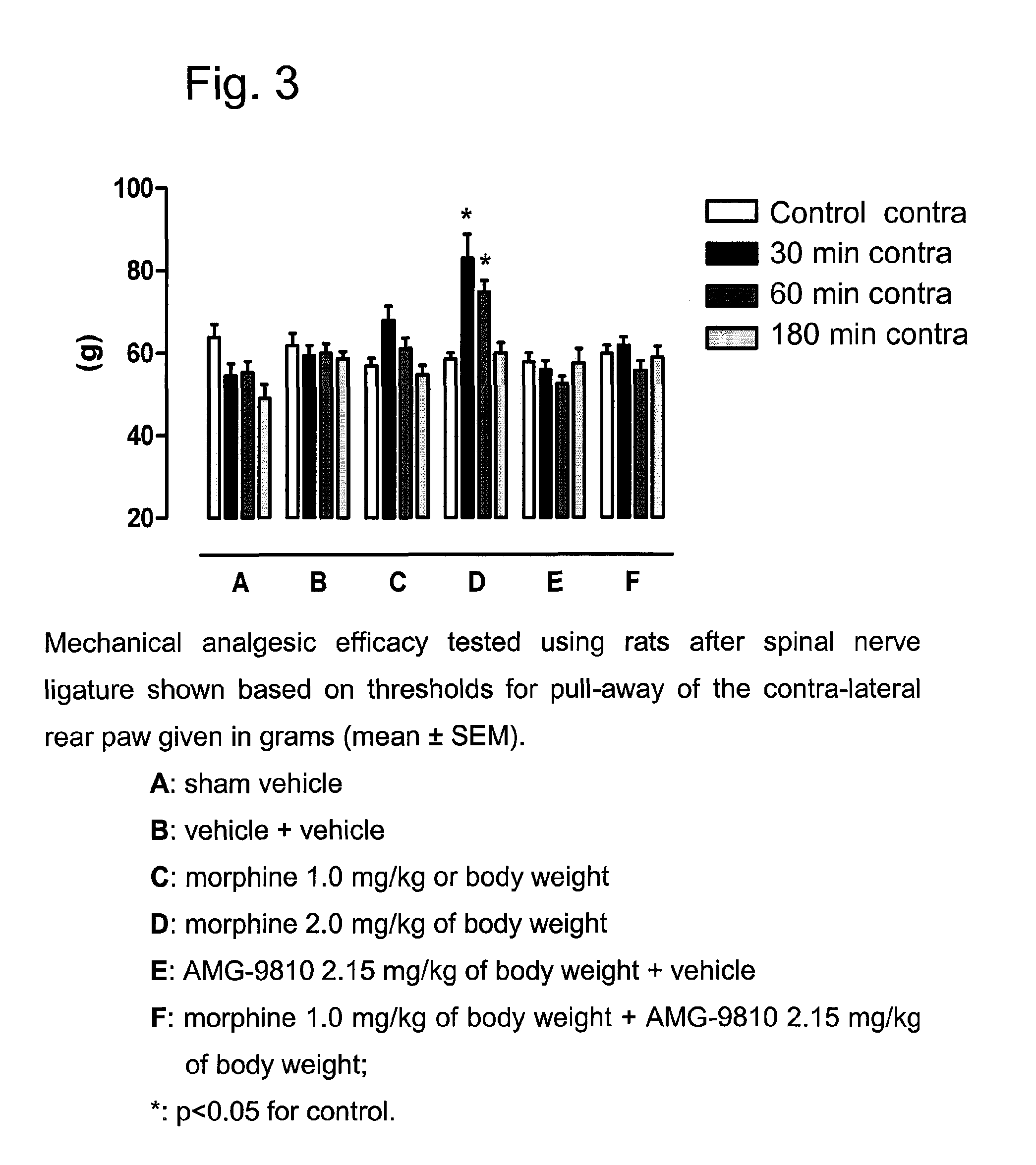VR1 Receptor Ligands and u-Opioid Receptor Ligands for the Treatment of Pain
a technology of vr1 receptor and uopioid receptor, which is applied in the field of vr1 receptor ligands and uopioid receptor ligands for the treatment of pain, can solve the problems of significant limitations in the treatment of postoperative pain, the difficulty of controlling acute pain, and the particulate pose a challenge for medical personnel, so as to reduce opioid-specific side effects, improve the analgesic effect, and reduce the effect of opioid-specific side effects
- Summary
- Abstract
- Description
- Claims
- Application Information
AI Technical Summary
Benefits of technology
Problems solved by technology
Method used
Image
Examples
example 1
[0585]The following experiments of Example 1 show the difference between the analgesic efficacy of a combination, which contains the VR1 receptor antagonist AMG 9810 (Gavva et al., JPET 2005, 313, 474-484) and the μ-opioid agonist morphine, compared to the application of morphine alone. In addition, the following experiments of Example 1 show the difference between the analgesic efficacy of a combination, which contains the VR1 receptor antagonist AMG-517 (Gavva et al., JPET 2007, 323, 128-137; Doherty et al., J. Med. Chem. 2007, 50, 3515-3527) and the μ-opioid agonist oxycodone, compared to the application of oxycodone alone. The experiments comprise the determination of the analgesic efficacy in the case of acute pain (tail-flick test in rats) and in the case of chronic neuropathic pain (Chung model after spinal nerve ligature in rats).
[0586]The following compounds were tested:
CompoundRIRIIRIIIRIVRV [1]—N(CH3)2—CF3—FN [2]—N(CH3)2—C(CH3)3—FN [3]—N(CH3)2—CF3—FN [4]—N(CH3)2—CF3—FCH [...
experiment 1
Analgesia Study in the Tail-Flick Test in Rats
[0589]The analgesic efficacy of the test compounds was examined in the hot beam (tail flick) test in rats using the method of D'Amour and Smith (J. Pharm. Exp. Ther. 1941, 72, 74-79). The time from switching on the lamp (8V / 50 W) to the sudden flicking away of the tail from the hot beam (pain latency) was measured by means of a semiautomatic apparatus (tail-flick Analgesiemeter Type 50 / 08 / 1.bc, Labtec, Dr. Hess, Germany). The lamp intensity was adjusted before conducting the experiments so that the time from switching on the lamp to the sudden flicking away of the tail (pain latency) amounted to 3-5 seconds in untreated animals. The lamp was automatically switched off after 12 seconds to avoid tissue damage to the rat's tail. The pain latency was measured 10, 20, 40 and 60 min after intravenous administration. The analgesic effect was determined as increase in pain latency (% MPE) according to the following formula:
% MPE=[(T1−T0) / (T2−T0)...
experiment 2
Mono-Neuropathic Pain after Spinal Nerve Ligature (Chung Model)
[0590]Under pentobarbital narcosis (Narcoren®, 60 m / kg i.p., Merial GmbH, Hallbergmoos, Germany), the L5, L6 spinal nerves were firmly bound. The left L5 and L6 spinal nerves were exposed by removing a piece of paravertebral muscle and a portion of the left spinal process of the L5 lumbar vertebral body. The L5 and L6 spinal nerves were carefully isolated and bound with a firm ligature (NC silk, black, USP 5 / 0, metric 1, Braun Melsungen AG, Melsungen, Germany) (Kim and Chung, An experimental model for peripheral neuropathy produced by segmental spinal nerve ligature in the rat, Pain, 50, 1992, 355-363). After haemostasis was determined, the muscle and adjacent tissue were sutured and the wound closed by metal clamps. After a one-week recovery period the animals were placed in cages with a wire base closed to the top by a plastic hood for measurement of the mechanical allodynia. The animals were kept in this cage until th...
PUM
| Property | Measurement | Unit |
|---|---|---|
| body weight | aaaaa | aaaaa |
| relative air humidity | aaaaa | aaaaa |
| temperature | aaaaa | aaaaa |
Abstract
Description
Claims
Application Information
 Login to View More
Login to View More - R&D
- Intellectual Property
- Life Sciences
- Materials
- Tech Scout
- Unparalleled Data Quality
- Higher Quality Content
- 60% Fewer Hallucinations
Browse by: Latest US Patents, China's latest patents, Technical Efficacy Thesaurus, Application Domain, Technology Topic, Popular Technical Reports.
© 2025 PatSnap. All rights reserved.Legal|Privacy policy|Modern Slavery Act Transparency Statement|Sitemap|About US| Contact US: help@patsnap.com



